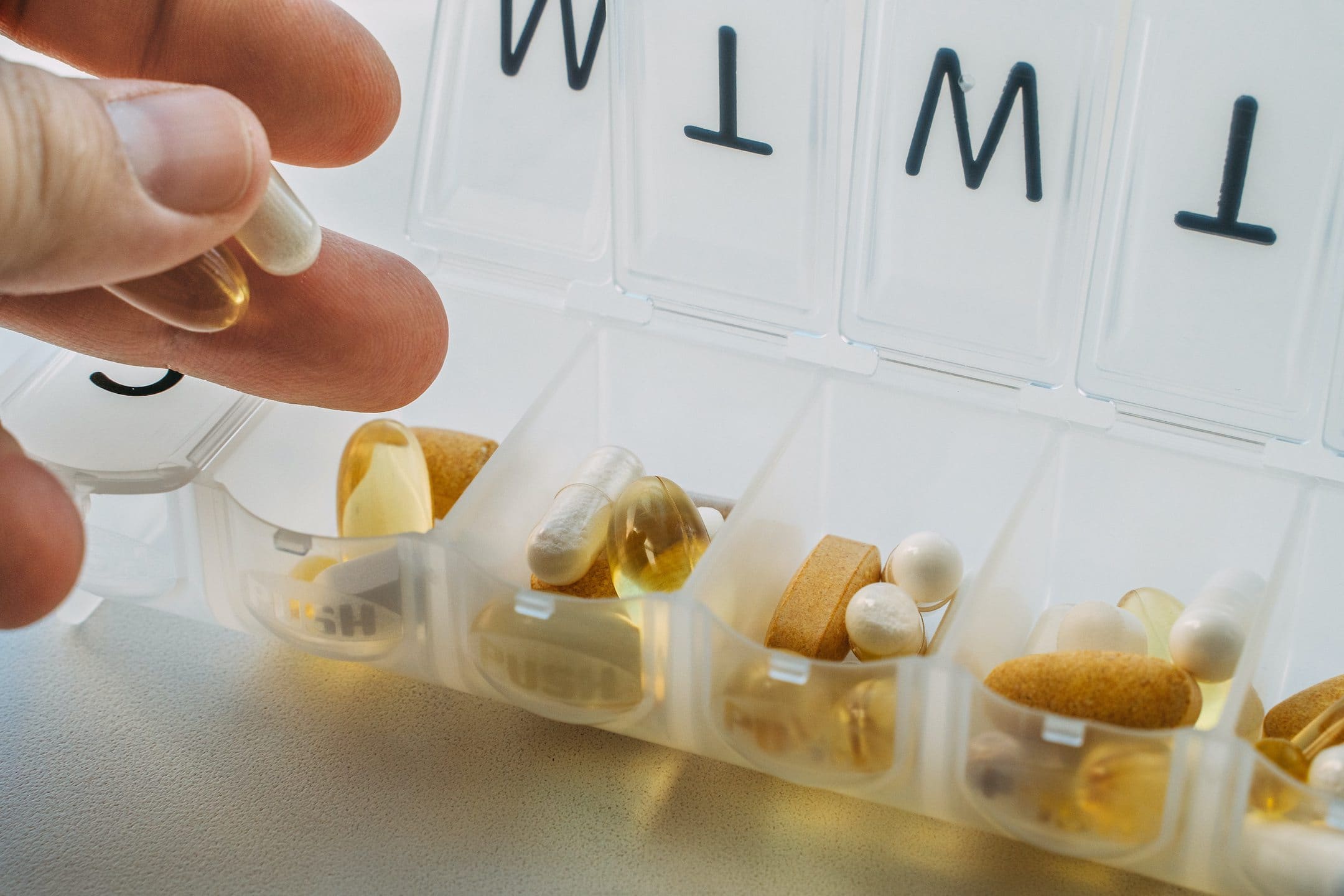About 12–18% of couples in the United States experience infertility. But there is help, and hope, for infertility with assisted reproduction technologies like intrauterine insemination (IUI). This article will review what intrauterine insemination is, who IUI is right for, and what the intrauterine insemination procedure looks like.
Key takeaways
- Intrauterine insemination (IUI) is a fertility treatment that involves washing and processing sperm before placing it directly in the uterus.
- IUI may be a good option for those with ovulation disorders, people using door sperm, or mild male-factor infertility. It’s also a common starting point for those with unexplained infertility.
- IUI is less expensive than IVF, but also less effective. IVF may be a better option for certain patients, including those dealing with severe male-factor infertility.
What is intrauterine insemination (IUI)?
Intrauterine insemination is a fertility treatment that’s routinely used to help couples who are having difficulty conceiving. IUI involves inserting sperm directly into the uterus, as close to the time of ovulation as possible, to improve chances of fertilization.
Who should consider intrauterine insemination (IUI)?
Intrauterine insemination is best for:
- People who have irregular or absent ovulation (known as anovulation)
- People with endometriosis
- As a first course of action for unexplained infertility
- People with mild male-factor infertility
- Those hoping to conceive with donor sperm
Is IUI a good choice for male-factor infertility?
Intrauterine insemination can be a good option for patients with mild male-factor infertility or unexplained infertility. Prior to the intrauterine insemination procedure, sperm will be washed to remove seminal fluid (including any contaminants or antisperm antibodies).
Processed sperm will then be inserted into the uterus, bypassing the vagina and cervix. This can give sperm a “kickstart” on the fertilization process, improving chances for those with slightly low sperm count or sperm motility. And, because this is timed carefully to the female partner’s ovulation cycle, chances of conception may be increased overall.
However, intrauterine insemination cannot compensate for an extremely low sperm count or motility. There still needs to be an adequate quantity of sperm to travel through the uterus and fallopian tubes to reach the egg, and sperm must be able to swim on their own to make this journey.
Most doctors will recommend IUI in cases where the male patient has a total motile sperm count of 8–10 million or more. Some data supports the use of intrauterine insemination for those with 1–5 million total motile sperm. But for those with very low sperm count (oligospermia or cryptozoospermia), very low sperm motility, or other male-factor infertility issues, IVF or IVF with ICSI may be a more effective option.
Not sure what your total motile sperm count is? We offer at-home semen analysis kits that test male fertility, including sperm concentration, sperm volume, sperm motility, sperm morphology, and total motile sperm count, giving you and your medical team a picture of your likelihood to conceive with IUI. Learn more about how at-home sperm testing works.
If you receive abnormal semen analysis results, those results may be used to give you a male-factor infertility diagnosis. You can talk to your doctor or a urologist about ways to improve your sperm health and improve your chances of success with intrauterine insemination (IUI) or other fertility journeys.
Step-by-step guide to IUI
As mentioned above, the intrauterine insemination procedure is timed carefully to the ovulation cycle of the person who hopes to get pregnant. An IUI cycle may or may not include medication to induce or time ovulation. Here’s the step-by-step to the intrauterine insemination procedure.
IUI step 1: Ovulation-inducing medication and/or tracking ovulation
For some IUI patients — especially those who have irregular or absent ovulation — medication may be prescribed to help promote ovulation. This medication could include clomiphene citrate (Clomid), letrozole, gonadotropins, and/or hCG. The patient’s response to the medication is monitored with blood work and transvaginal ultrasound as the cycle progresses.
Some patients may not need medication. If the person hoping to get pregnant ovulates regularly on their own, and is doing intrauterine insemination because of mild male-factor infertility or in order to use donor sperm, they may be able to track their unmedicated cycles using:
- Bloodwork and ultrasound with their healthcare provider
- At-home ovulation predictor kits that detect luteinizing hormone levels in the urine
- Basal body temperature charting
These techniques can help pinpoint the day of ovulation, also known as the fertile window, in unmedicated intrauterine insemination cycles.
IUI step 2: Processing the sperm
Whether you’re using sperm from a male partner or a sperm donor, it will need to be washed and processed prior to the intrauterine insemination. The process is as follows:
- A lab specialist adds a sperm wash media to the semen sample. This media usually contains antibiotics as well as nutrients to fuel the sperm.
- The sperm is spun in a centrifuge machine for about 15 minutes. This separates the sperm from the seminal fluid.
This process of sperm washing helps eliminate contaminants and bacteria that could affect sperm health or motility.
IUI step 3: The insemination procedure
The insemination itself will happen at the time of ovulation. The prepared sperm will be loaded into a syringe, which is attached to a catheter. The catheter is placed through the cervix and into the uterus. Then, the doctor plunges the syringe, inserting sperm directly into the uterine cavity.
From there, sperm still need to swim through the uterus and into the fallopian tubes to make it to the egg. But during natural conception, many sperm are lost in the vaguina and cervix, so bypassing these obstacles gives sperm a head start and maximizes the number of sperm that make it to the uterus. Combined with the fact that you know an egg is waiting to be fertilized, intrauterine insemination can increase chances of conception.
Approximately two weeks after the intrauterine insemination procedure, a blood test can be used to confirm a pregnancy.
Should you freeze sperm before intrauterine insemination (IUI)?
We recommend that all people undergoing fertility treatment freeze a healthy semen sample prior to starting their cycle. This ensures that you have a “back-up” sample to use for your IUI, in case:
- Your male partner or donor cannot be there on the date of your insemination
- Your male partner or donor has difficulty ejaculating on the date of your insemination
For couples with male-factor infertility, freezing a semen sample in advance can provide a back-up in case total motile sperm count is too low on the date of the procedure. Some fertility doctors will also do sperm “pooling,” in which multiple samples are combined to increase the number of motile sperm available.
Legacy offers convenient, accessible at-home sperm freezing services.
Using frozen sperm does not significantly change the process of IUI. On the day of the intrauterine insemination procedure, the sperm is carefully thawed and processed in the lab. Then, it can be inserted into the uterus, just like fresh sperm.
Intrauterine insemination success rates
The average intrauterine insemination success rate is approximately 10% per cycle for those who don’t use ovulation medication, and about 15–25% for those who do. Cumulative cycles can increase overall intrauterine insemination success rates. Most pregnancies occur within the first four IUI cycles.
IUI is a frequently utilized and effective treatment for infertility, but intrauterine insemination success rates may vary based on patient and cycle-specific factors such as age, sperm count, infertility diagnosis, and medication protocol.
The age of the person trying to become pregnant makes a significant difference to the likelihood of pregnancy after IUI. One study of over 4,000 cycles found the following IUI pregnancy rates and intrauterine insemination success rates by the age of the female patient:
| Age of person trying to become pregnant | Approximate chance of pregnancy per IUI cycle | Approximate chance of pregnancy after multiple cycles |
| 24 or younger | 20% | 37.5% |
| 25–29 | 13% | 28% |
| 30–34 | 11% | 22% |
| 35–41 | 9% | 21% |
| 42–43 | 6% | 15% |
| 43 or older | 3.5% | 8% |
The age of the person providing the sperm can also affect intrauterine insemination success rates. One study found that couples with a male partner over the age of 35 had half the chance of success with IUI, compared to couples with a male partner under the age of 30.
Learn more about age and male fertility.
Fresh vs. frozen sperm — which is better for IUI?
“Fresh” sperm refers to sperm that’s never been frozen and thawed. A 2022 study found that, for most patients, fresh and frozen sperm had equal success rates. This should provide reassurance to those who are considering sperm freezing as a way to protect their ability to have children later, as well as those who are using frozen sperm from a sperm donor.
Intrauterine insemination costs
One cycle of intrauterine insemination costs, on average, $500–$2,000, depending on the clinic, the type of medication used, the monitoring required, and any follow-up.
According to FertilityIQ, here’s a breakdown of what intrauterine insemination costs:
- In-office intrauterine insemination cost: $400
- Pre-IUI monitoring: $500–$1,000
- Medications: $150–$1,000
What is the difference between intrauterine insemination (IUI) and in-vitro fertilization (IVF)?
IUI and IVF are both fertility treatments that can be used to overcome a variety of factors contributing to difficulty getting pregnant. However, the two procedures are very different in terms of process, cost and effectiveness.
IUI vs. IVF: Process
As described above, intrauterine insemination (IUI) is a process in which ovulation is induced and/or monitored. Sperm is inserted at the time of ovulation to increase the chances of fertilization. IUI does not typically involve any surgical procedures, and only rarely uses injectable medications.
IVF, on the other hand, involves removing the eggs from the ovaries surgically and fertilizing them with sperm in a lab. Typically, IVF involves a few steps:
- Ovarian stimulation using injectable medication, which allows for the production of multiple eggs in one cycle. During this time, patients are seen every 2 days or so to monitor progress.
- An egg retrieval, a surgical procedure in which the eggs are removed from the ovaries using an ultrasound-guided needle. This happens at the time of ovulation.
- The in vitro fertilization process, in which sperm is combined with eggs in the lab to facilitate fertilization and create embryos. From there, patients can choose to test, freeze, or utilize their embryos by inserting one or two of them into the uterus.
IUI vs. IVF: Cost
IVF is more medically involved than IUI, and the cost reflects that. While intrauterine insemination costs about $500–$2,000 per cycle, in vitro fertilization can cost about $12,000 or more, depending on the medication protocol and any additional procedures used during IVF (such as embryo genetic testing).
In some cases of IVF, a clinic may use ICSI — intracytoplasmic sperm injection — to fertilize the egg. This is a process by which a single sperm is injected directly into an egg in the lab. This process is valuable when:
- The sperm has low or no motility (ability to move on its own)
- Quantities of sperm are very limited, such as sperm frozen before sterilizing cancer treatment
- Sperm is retrieved directly from the testes (known as testicular sperm retrieval), in which case it will likely have low motility
ICSI can increase success rates in these cases. It will also increase the overall cost of IVF by about $1,000–$2,500. ICSI can only be used during IVF, not during IUI.
IUI vs. IVF: Success rates
While insemination is less expensive than in vitro fertilization (IVF), it’s also less effective per cycle. IVF success rates also depend on the age of the person trying to get pregnant, but they’re higher overall than IUI success rates.
According to the CDC, the success rates of IVF is as follows:
| Age of person trying to get pregnant | Chance of live birth per IVF egg retrieval |
| Under 35 | 55.7% |
| 35–37 | 41.5% |
| 38–40 | 27.6% |
| Over 40 | 9.5% |
Keep in mind that one egg retrieval is likely to create multiple embryos that can later be transferred — and multiple transfers may be necessary to achieve a pregnancy.
Comparing costs and success rates of IUI to IVF, you can see that IUI is about half as expensive as IVF for the same chance of pregnancy. IVF is a more effective option than IUI for certain types of patients, including:
- People with blocked fallopian tubes
- People with advanced endometriosis.
- People with moderate to severe male-factor infertility.
- People using sperm retrieved directly from the testes.
- People with limited amounts of frozen sperm and no “fresh” sperm option
- People who want to or need to do genetic testing on their embryos (such as couples who carry certain genetic illnesses)
- People who have tried multiple IUI cycles without success



